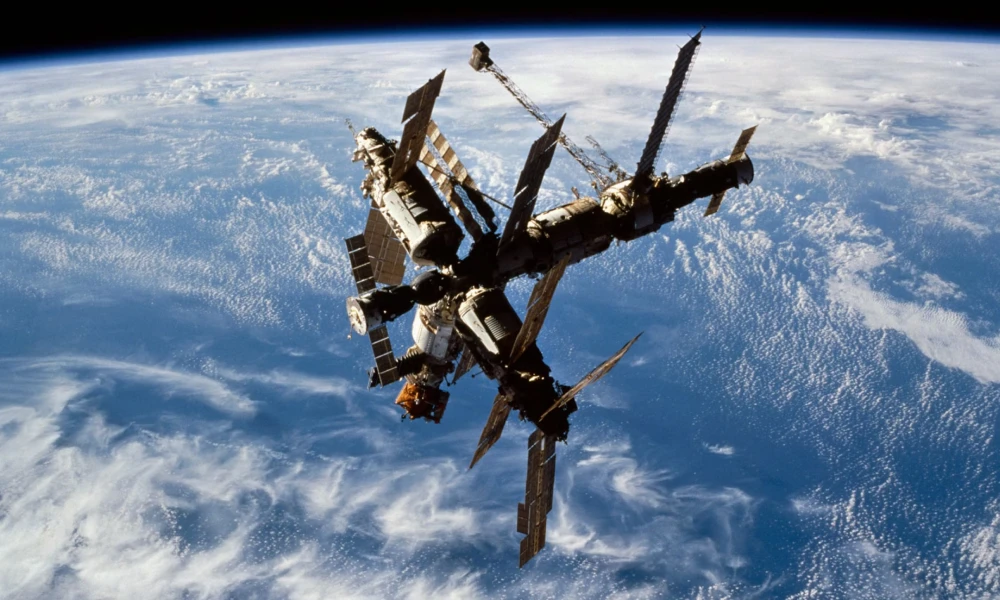The Russian space station Mir, meaning “peace” or “world” in Russian, was a groundbreaking orbital complex that paved the way for long-duration space habitation and international cooperation in space.
Launched on February 20, 1986, Mir was the first modular space station, assembled in orbit piece by piece. The initial core module was followed by additional modules over the years, including Kvant-1 (1987), Kvant-2 (1989), Kristall (1990), Spektr (1995), and Priroda (1996). This modular approach allowed for expansion and upgrades throughout its lifespan.
Mir served as a microgravity research laboratory, where crews conducted experiments in biology, physics, astronomy, meteorology, and space manufacturing. It also provided valuable data on the effects of long-duration spaceflight on the human body, crucial for future missions to Mars and beyond.
The station hosted 28 long-duration crews and numerous visiting missions. Cosmonauts like Valeri Polyakov set records for continuous time in space, with Polyakov spending 437 days aboard Mir in a single mission.
Mir became a symbol of international cooperation in the post-Cold War era. It hosted astronauts from 12 different countries, including the United States, as part of the Shuttle-Mir program. This collaboration laid the groundwork for the International Space Station (ISS) partnership.
However, Mir’s later years were marked by a series of mishaps. In 1997, a fire broke out onboard, and later that year, a Progress supply ship collided with the Spektr module during a docking attempt, causing a partial depressurization of the station. Despite these challenges, the crew’s resourcefulness and ground support kept Mir operational.
As Mir aged and became more costly to maintain, and with the ISS project underway, the Russian government decided to deorbit the station. On March 23, 2001, after 15 years in orbit, Mir was deliberately deorbited, breaking up over the South Pacific Ocean.
Mir’s legacy is profound. It demonstrated the feasibility of long-term human presence in space and provided invaluable experience in operating a large space station. Many of the lessons learned from Mir were applied to the design and operation of the ISS.
The station also played a crucial role in maintaining Russia’s space program during the economically turbulent 1990s. It became a source of national pride and a platform for international prestige during a challenging period of transition.
Mir’s story is one of ambition, resilience, and international cooperation. Despite its challenges, it stands as a testament to human ingenuity and the spirit of exploration. The knowledge gained from Mir continues to influence space exploration today, as humanity looks towards establishing a permanent presence on the Moon and eventual missions to Mars.

